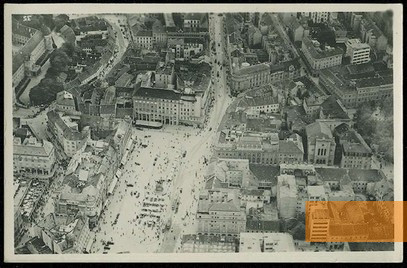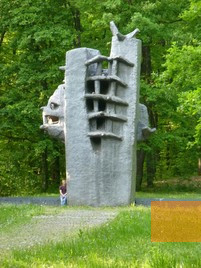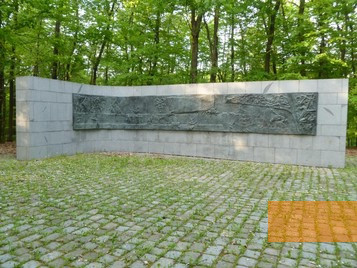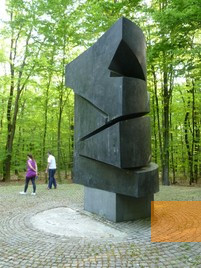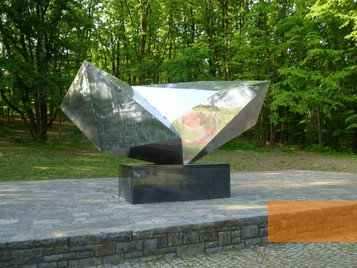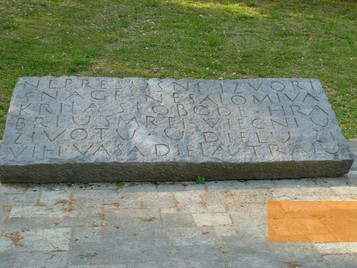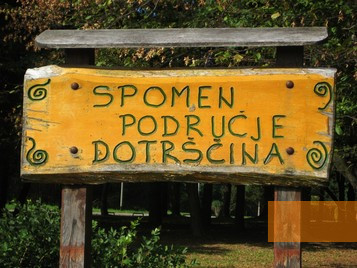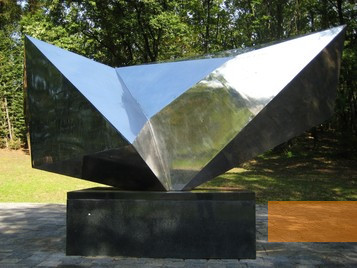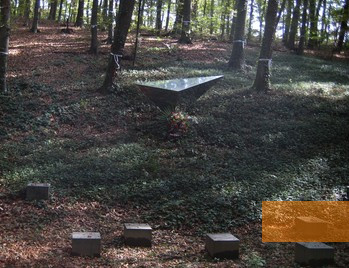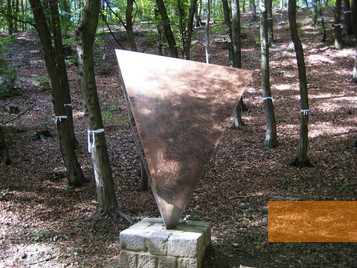Several monuments in the Dotršćina Park in Zagreb have since the 1960s commemorated the up to 18,000 people, who were executed there by units of the fascist Ustaša between 1941 and 1945.
Zagreb is located in the Pannonian Basin on both banks of the Sava river. Until 1918, Zagreb was the capital of the Kingdom of Croatia and Slavonia and thus part of the Austro-Hungarian empire. The city was the cultural and economic centre of Croatia. After the First World War, Croatia and Serbia united to form the Kingdom of Serbs, Croats and Slovenes, which later became Yugoslavia.
After the German invasion of Yugoslavia in April 1941, Yugoslavia was dismembered. In Croatia, the fascist Ustaša movement proclaimed the Independent State of Croatia (Croatian: Nezavisna Država Hrvatska), an ally of Germany and Italy. Ustaša supporters immediately began persecuting minorities in the newly founded state, particularly Serbs, Jews and Roma. Already in June 1941, first laws were passed on the basis of which the Ustaša-controlled police arrested Serbs and Jews. In Zagreb alone, several thousands of people were imprisoned in a matter of months. Many of them were later deported by the Ustaša to forced labour camps and death camps, others were shot at execution sites in the vicinity of the city. The largest of these execution sites was Dotršćina Park, a municipal forest located in the north of Zagreb. According to estimates, about 7,000 people were killed here by the Ustaša between 1941 and 1945.
After the German invasion of Yugoslavia in April 1941, Yugoslavia was dismembered. In Croatia, the fascist Ustaša movement proclaimed the Independent State of Croatia (Croatian: Nezavisna Država Hrvatska), an ally of Germany and Italy. Ustaša supporters immediately began persecuting minorities in the newly founded state, particularly Serbs, Jews and Roma. Already in June 1941, first laws were passed on the basis of which the Ustaša-controlled police arrested Serbs and Jews. In Zagreb alone, several thousands of people were imprisoned in a matter of months. Many of them were later deported by the Ustaša to forced labour camps and death camps, others were shot at execution sites in the vicinity of the city. The largest of these execution sites was Dotršćina Park, a municipal forest located in the north of Zagreb. According to estimates, about 7,000 people were killed here by the Ustaša between 1941 and 1945.
Little is known about the people who were executed in the Dotršćina Park. The bodies of the victims were brought away from the site, only some of them were buried in the park itself. It is estimated that about 7,000 people were shot by Ustaša units at this site between 1941 and 1945. In the meantime, historians were able to establish the names of about 700 people killed in the Dotršćina Park. It is estimated that altogether about 18,600 people were killed by the Ustaša regime in Zagreb and surroundings. These figures cannot be verified, however, as the fate of the prisoners after being arrested is documented only in rare cases.
From 1963 on, the Dotršćina Park was remodeled as a memorial park at the behest of the Zagreb municipal authorities. Gradually, several monuments were erected in the park and its vicinity, each dedicated on May 8 during commemorative ceremonies to the victims of fascism. The best-known memorial was created by Yugoslav sculptor Vojin Bakić. The abstract, shiny metal sculpture at the park entrance, reminiscent of a crystal, is entitled »Times of Martyrdom« and was dedicated on May 8, 1968. Next to it is a memorial stone bearing following inscription: »Inexhaustible source of strength. Unbreakable wings of freedom. Brave in death, eternal in life. Your deeds live on in the deeds of the living.«
In addition to the large metal sculpture at the entrance of the park, seven additional metal sculptures by Bakić can be seen in the valley. These small »crystals« and the stone cubes surrounding them symbolize graves. Further memorials are situated on the hills of the park.
On September 21, 2012, »Documenta«, a Croatian initiative for historical remembrance, launched the »virtual museum Dotrscina« on the internet. Its aim is to address the topic of »the forgotten historical site Dotršćina« publicly.
In addition to the large metal sculpture at the entrance of the park, seven additional metal sculptures by Bakić can be seen in the valley. These small »crystals« and the stone cubes surrounding them symbolize graves. Further memorials are situated on the hills of the park.
On September 21, 2012, »Documenta«, a Croatian initiative for historical remembrance, launched the »virtual museum Dotrscina« on the internet. Its aim is to address the topic of »the forgotten historical site Dotršćina« publicly.
- Name
- Spomenik žrtvama fašizma u Dotrščini
- Address
-
Štefanovec
10000 Zagreb - Web
- http://www.dotrscina.hr/
- Open
- The memorials are always accessible.


